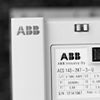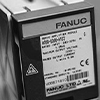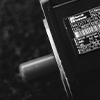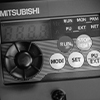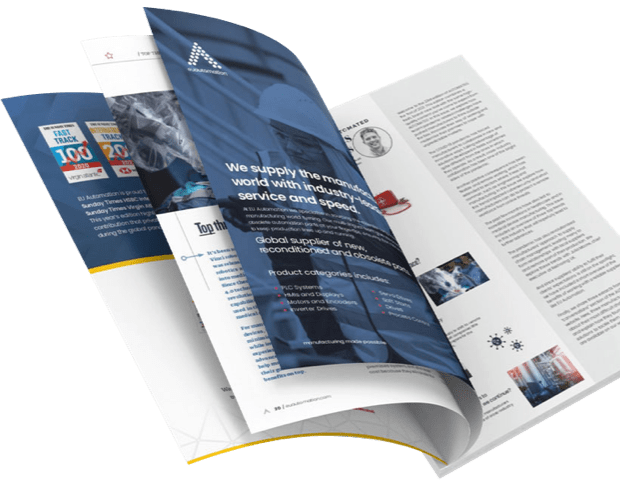Siemens ET 200M Obsolescence: phase-out dates
September 29, 2025
Navigating the Siemens ET 200M obsolescence: key dates, replacement options and migration strategies
The Siemens ET 200M, part of the SIMATIC family of distributed I/O systems, has been a reliable cornerstone in industrial automation for decades. Its flexibility, modular design and compatibility with the S7-300 PLC made it a popular choice across industries including automotive, pharmaceuticals, food and beverage and energy.
Now Siemens has confirmed the ET 200M obsolescence, with the P.M410 type discontinuation set for October 2025. This decision is part of Siemens’ broader product lifecycle strategy, ensuring its customer base transitions to newer systems that align with digitalisation, higher performance requirements and long-term support.
For engineers and procurement teams, this is more than a product announcement. It represents a strategic turning point. Decisions made now will affect maintenance costs, production reliability and the ability to compete in a marketplace where downtime carries real financial consequences.
Understanding the Siemens ET 200M
Historical role in Siemens product lifecycle
When launched, the SIMATIC ET 200M offered something new: scalable modularity combined with Siemens’ reliability standards. It became the natural partner to the S7-300 PLC, allowing distributed I/O over Profibus networks. This architecture reduced wiring complexity and offered clear diagnostic feedback, both crucial for factories seeking efficiency and consistency in operations.
Key technical strengths
- Flexible I/O options: Supported digital and analogue modules, providing adaptability across industries.
- Diagnostics: Offered standard fault recognition, reducing downtime from undetected errors.
- Network compatibility: Designed for Profibus and widely integrated in Siemens automation systems.
- Longevity: Its durability made it suitable for environments where equipment turnover is costly and disruptive.
These qualities explain why so many facilities still rely on the ET 200M in 2025 and why its obsolescence presents a challenge.
Siemens ET 200M obsolescence timeline
Lifecycle stages (PM400 → PM410)
Siemens uses Product Lifecycle Management (PLM) terminology to define each phase:
- PM400 (Phase-Out): Issued in 2023, signalling that the ET 200M would be withdrawn.
- PM410 (Type Discontinuation): Effective from October 2025, marking the end of production [1].
Deadlines and support windows
- Last orders from Siemens: Accepted until October 2025.
- Repair services: Siemens typically offers limited repair support for several years post-discontinuation.
- Spare parts: Stocks will decline year by year, often accompanied by rising costs and longer delivery times [2].

Why the timeline matters
For businesses, these dates are not simply administrative. They mark the point at which reliance on Siemens’ direct support will no longer be viable. From that point, maintenance teams must depend on third-party suppliers and existing stockpiles. This creates supply chain risks that must be mitigated in advance.
Risks of delaying ET 200M migration
Rising procurement costs
When a product moves into obsolescence, supply tightens and prices rise. Distributors may hold limited stock and secondary market costs often increase significantly. Procurement teams that wait until after October 2025 may find themselves competing with global buyers for the last available modules.
Maintenance and repair bottlenecks
Siemens’ official repair services will continue for a limited time, but turnaround is likely to be slower and more expensive. Meanwhile, third-party repair services vary in quality and availability. Over time, the reliability of keeping ET 200M modules in service diminishes.
Downtime and business disruption
The greatest risk is downtime. A failed ET 200M module without a replacement can halt entire production lines. In industries such as food manufacturing or pharmaceuticals, downtime not only carries direct financial costs but may also cause compliance issues, delivery failures and reputational damage.
ET 200M replacement and successor systems
Official Siemens successors
To ensure continuity, Siemens has designated three systems as official ET 200M successors:
- Siemens ET 200SP: A compact, decentralised system optimised for smaller installations and cabinet space savings.
- Siemens ET 200MP: A modular system designed for larger automation setups requiring scalability and high performance.
- Siemens S7-1500 PLC: The successor to the S7-300 controller, offering enhanced processing, integrated safety and support for digitalisation initiatives.
How successors improve on ET 200M
- ET 200SP: Faster installation, hot-swappable modules and a smaller footprint.
- ET 200MP: Maintains modularity but with improved performance and easier engineering integration.
S7-1500: Enhanced diagnostics, cybersecurity features and native support for Profinet, Siemens’ current communication standard.

Choosing the right successor
Selection depends on installed base and business objectives:
ET 200SP is ideal for plants looking to save space while upgrading incrementally.
ET 200MP fits larger facilities where modularity and high throughput remain central.
S7-1500 represents a full upgrade pathway, aligning with Siemens’ long-term automation roadmap.
Migration planning for Siemens ET 200M
Audit the installed base
A full audit is the first step. Identify all ET 200M units in service, their condition and their role in production. Mapping dependencies highlights which systems require urgent replacement.
Check compatibility
Moving from S7-300 to S7-1500 requires adjustments in PLC programming and may involve cabling changes. This is particularly when shifting from Profibus to Profinet. Compatibility checks should cover both hardware and software.
Decide on migration strategy
Phased migration: Replace critical lines first while maintaining others until parts run out.
Full upgrade: Replace all ET 200M units in one project, eliminating long-term risk but requiring higher upfront investment.
Secure spare parts
Even during migration, access to Siemens ET 200M spare parts is essential. Partnering with trusted suppliers ensures continuity during the transition period [4].
Practical steps for engineers and procurement
Budget strategically: Include not just equipment costs, but engineering hours, training and contingency planning.
Stockpile essentials: Acquire enough ET 200M modules to cover critical failures during the transition.
Plan training: Ensure teams are trained in the new platforms (ET 200SP, ET 200MP, S7-1500) before deployment begins.
Coordinate with suppliers: Reliable suppliers can support both spare parts and transition guidance.
Conclusion
The Siemens ET 200M obsolescence is not just a product update. It represents a significant lifecycle milestone that requires proactive planning. With the P.M410 type discontinuation set for October 2025, organisations must act now to avoid escalating costs and operational risks.
Companies can navigate the transition effectively by auditing installed bases. They should also budget for upgrades, secure spare parts, and train staff on successor systems. The selection of a successor, whether it be ET 200SP, ET 200MP, or S7-1500, should be influenced by the operational scale. It must consider the system requirements and long-term strategy.
Preparing today ensures manufacturing operations remain reliable, compliant and future-ready in a competitive industrial landscape.
FAQS
Q: When will the Siemens ET 200M be discontinued?
A: Siemens has confirmed the ET 200M will be discontinued in October 2025 [1].
Q: What are the official replacement options?
A: Siemens lists ET 200SP, ET 200MP and S7-1500 as successors [2].
Q: Can I still buy new ET 200M parts after 2025?
A: No new modules will be available after October 2025, but spare parts may be sourced from distributors for a limited time [2].
Q: What risks exist if I delay migration?
A: Risks include higher costs, reduced availability of spares, longer repair times and potential production downtime.
References
[2] https://www.piglerautomation.com/et-200m-upgrade-whats-holding-you-back/
